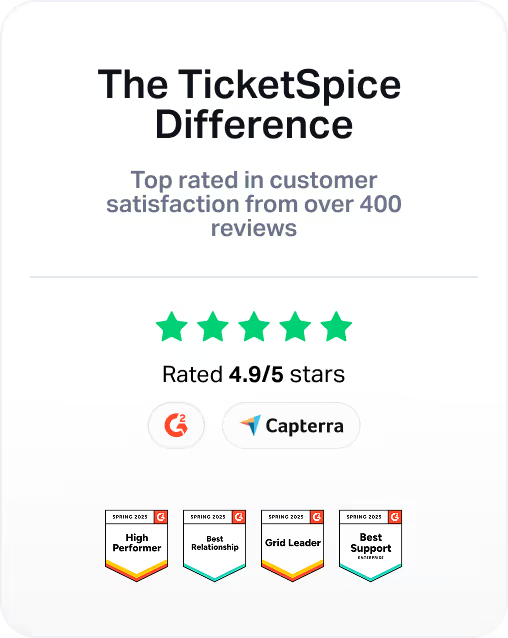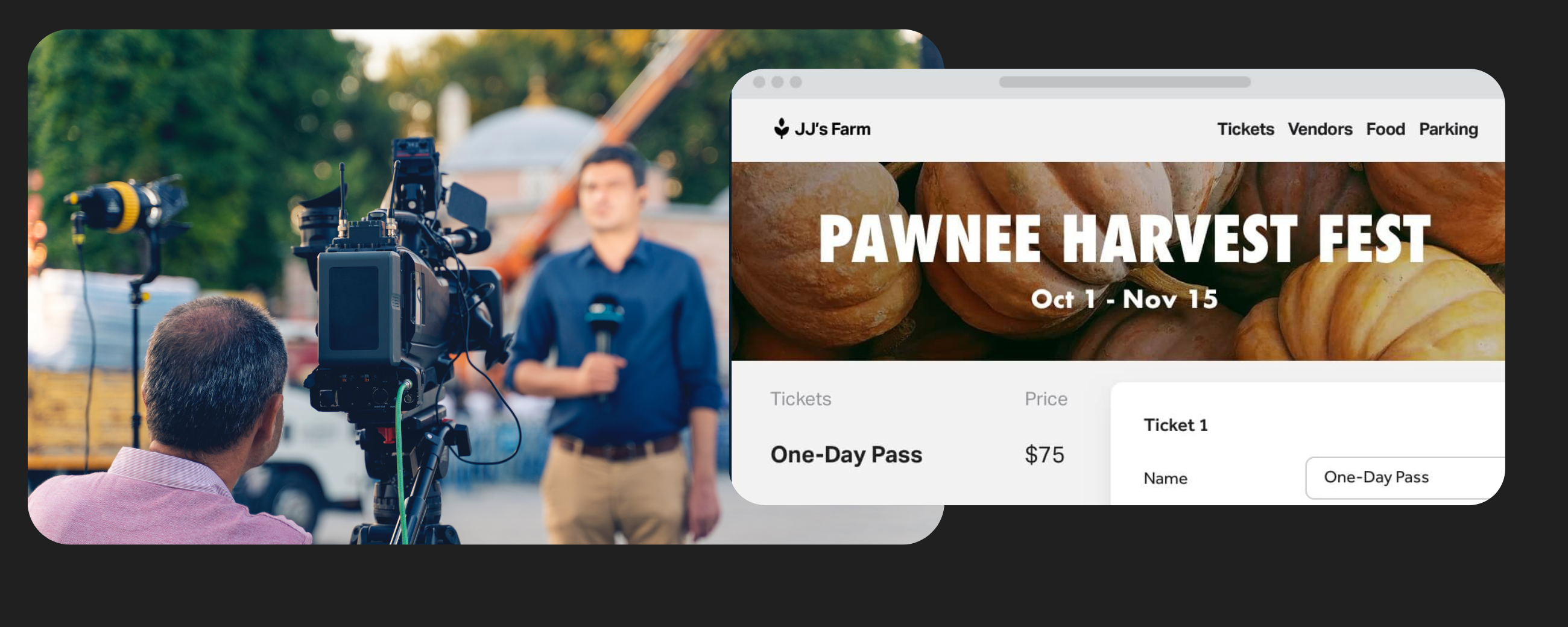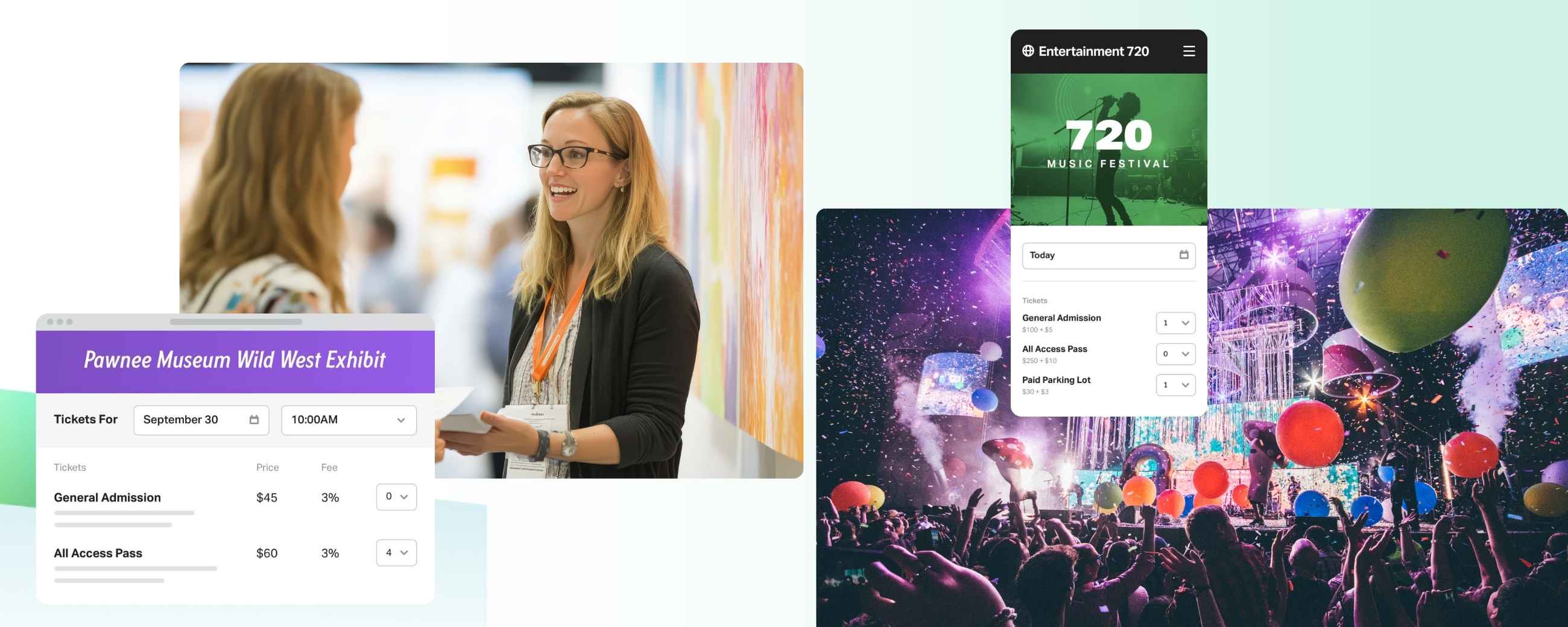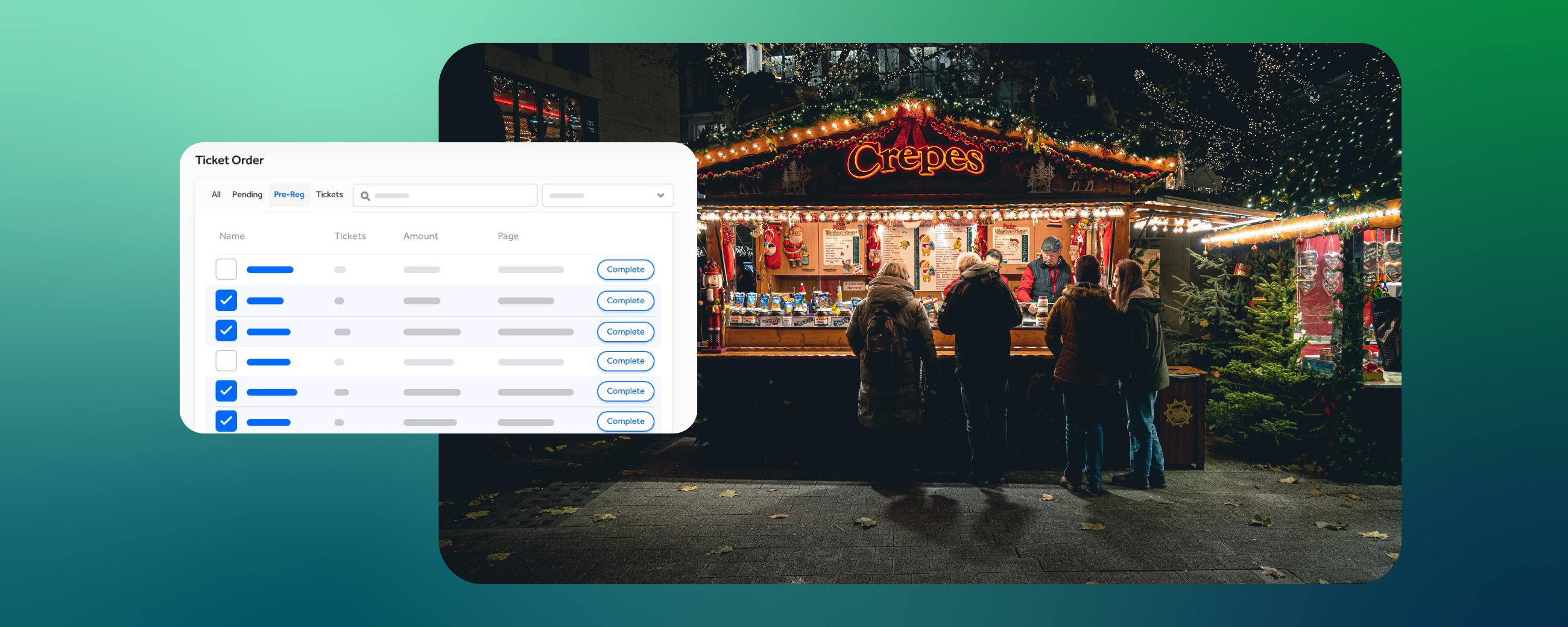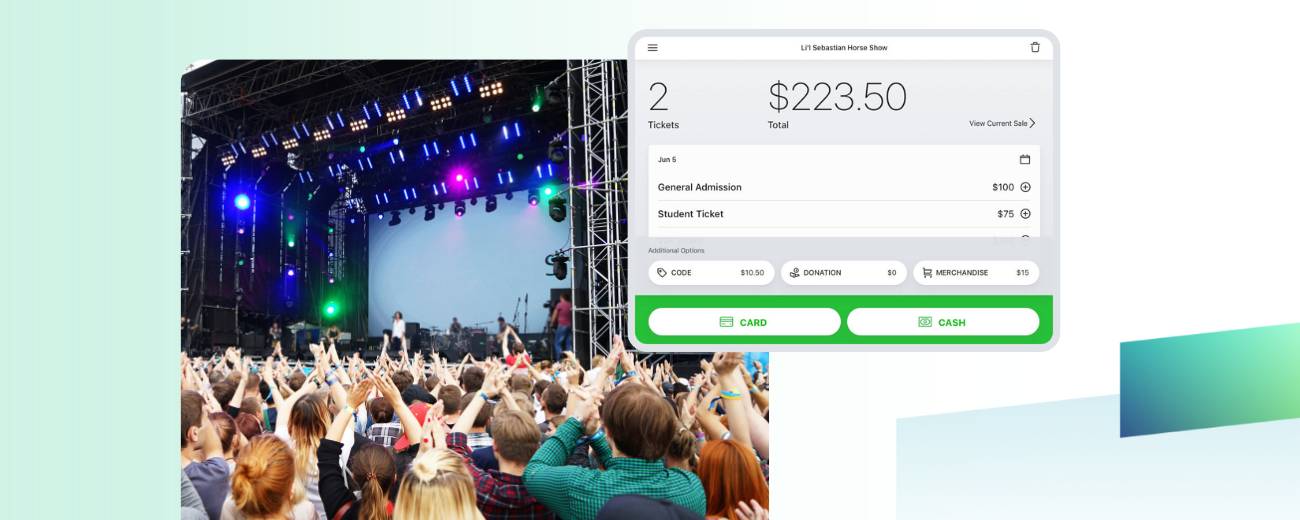How to Get Media Coverage For Your Event & Why Do It Now
Whether you're organizing your town’s first farm-to-fork banquet or the largest latte art throw down in the city, there’s no reason for the sparks of your event to die when your attendees drive away. If you create a splash with local media, people will talk about your event for days to come. Media outlets are constantly on the lookout for fresh, timely stories that capture audience interest. Positioning your event as newsworthy and time-sensitive increases its appeal to journalists seeking content to fill their platforms.
Perhaps you’re thinking, “being in the news sounds great, but I don’t have any celebrities at my event.” It turns out that you don’t have to be a celebrity to attract the press; you just need to be strategic. Keep reading, and we’ll teach you the necessary steps to get the press to your event.
Consult Your Media List
A media list is, well, exactly what it sounds like: a list of media contacts. Keeping your list updated and fortified with a variety of contacts will help the rest of your process run more smoothly.
For those starting from scratch, begin by gathering the contact info of local newspaper reporters, TV affiliates, and radio stations. Reach out to a few notable bloggers and online influencers, as well. Start establishing these connections well before your event.
Craft a Press Release
A press release is a short but detailed message that alerts the press about your event. Unless you’re featuring big-time celebrities at your event, you need to make the press release compelling enough for the media to want to show up. Here’s a list of what to include.
- Key logistics of when and where the event takes place.
- The heart of your event’s purpose.
- The brands sponsoring the event.
- Unique aspects of your event
- Quality photos
- A final summary with a call to action.
- Your contact information.
Once you have a solid draft, save the content template and repurpose it later.
Tips for Contacting Different Types of Media
When reaching out to different types of media outlets, tailoring your approach to each one will increase your likelihood of responses. Below are some tips for contacting different types of media.
Print Media (Newspapers and Magazines): Start by researching journalists who cover topics related to your event. Craft personalized pitches highlighting why your event would interest their readership. Consider offering exclusive content or interviews to increase the appeal.
Broadcast Media (TV and Radio): Pitch your event as a visual or auditory story. Highlight elements that make for compelling footage or soundbites. To make their job easier, offer to provide visuals, such as pre-recorded interviews or B-roll footage.
Online Media (Blogs and Influencers): Identify bloggers and online influencers whose audience aligns with your event. Reach out with personalized messages emphasizing how their platform can benefit from covering your event. Offer incentives such as VIP access or exclusive content for their followers.
Social Media: Leverage social media platforms to engage with journalists and media outlets. Follow them, interact with their content, and share relevant updates about your event. Direct messaging on platforms like Twitter or LinkedIn can also be effective for initiating contact.
Remember to maintain professionalism and respect journalists' time and preferences when reaching out. Building genuine relationships with media contacts can lead to long-term coverage opportunities for future events.
Send a Personal Invitation
Once you’ve drafted your press release, don’t hit send right away. Generic releases tend to drown in piles and inboxes. To make your request stand out, do some preliminary research.
The press is already asking why they should attend, so take it a step further and do their homework for them. If you notice a journalist regularly tweets about local farmer’s markets, for example, mention that detail when you reach out about the farm-to-fork banquet. If a local influencer posts daily latte shots, invite them to the latte art event. A personalized request with specific details increases your chances of seeing the media in attendance.
Pro tip: Keep the scheduling easy by sending a calendar link.
Make Your Event is Media-Friendly
A “media-friendly” event seems like it could go without saying, but we need to say it. The key characteristics that make for a media-friendly event are easy to overlook when you’re in the weeds of event planning.
- A clear calendar: Check the local calendar to ensure your event doesn’t compete with other big events, such as a city-wide parade or a championship sports game.
- Appealing visuals: A festival with elegant decor will naturally garner more positive attention than one with tacky signage and plastic cupcake containers littering the interview area. Your venue doesn’t need gold-plated centerpieces, but make sure it’s clean and in good condition for photos.
- Media-friendly people: For events involving interviews or panels, select people who love being on camera and light up when they articulate their experiences.
- Dedicated space: Whether it’s for note-taking, filming, or conducting interviews, provide space for the media to do their thing.
Reach Out After Your Event
Sometimes, despite your best efforts and most thoughtful preparations, the media still doesn’t make an appearance. Don’t lose heart, however, because there’s still an opportunity. The moment your event wraps up, send any relevant materials, including photos, videos, quotes, and a summary of the event, to your media contacts. When you post about the event, tag journalists and photographers on social media. Even if delayed, this kind of press attention will still benefit your event in a positive way.
Pitching Strategy Example
Imagine you've planned a charity gala for your cause at 6:00 p.m. on Friday. Here's an example of how you might schedule the outreach leading up to the event.
- Once the event is confirmed: Shoot a quick email to the key reporters you know, giving them a heads-up so they can schedule you into their calendars well in advance.
- The Monday morning before: Send the print reporters on your media list the comprehensive event details via email. Consider including a personal note atop your media advisory, too.
- Thursday mid-morning: Send your media advisory to TV and radio stations. Sending it within 36 hours of the event will help keep the event fresh in their minds.
- Thursday at noon: Call the station’s Assignment Desk to confirm they've received your advisory and added it to their assignment book. The purpose of this step is to ensure you get considered for coverage that day.
- Thursday before 6:00 pm: Check in with print reporters and the station to see if they can make it.
- An hour or two before your event kicks off: Touch base with stations once more to finalize their coverage plans. While this might seem last-minute, stations often delay their final decisions until right before an event.
- At the event: Introduce yourself to the attending reporters as the press contact for your charity gala. Give them an opportunity to speak with someone with a compelling story pertinent to the event. If you haven’t already, collect their contact information so you can check in with them later.
- Friday evening or Saturday morning: It’s follow-up time! Reach out to the reporters in attendance to see if they have any questions and offer further details. Also, keep an eye out for any coverage of your event. Assuming it’s favorable, share the coverage across your social media platforms for maximum visibility.
Attracting media coverage can have a significant impact on your event. For best results, follow the tips and practices in this article. As always, if you have any questions or concerns don’t hesitate to reach out to our support team.
We want to see you have your best event ever!
— The Ticket Spice Team
















